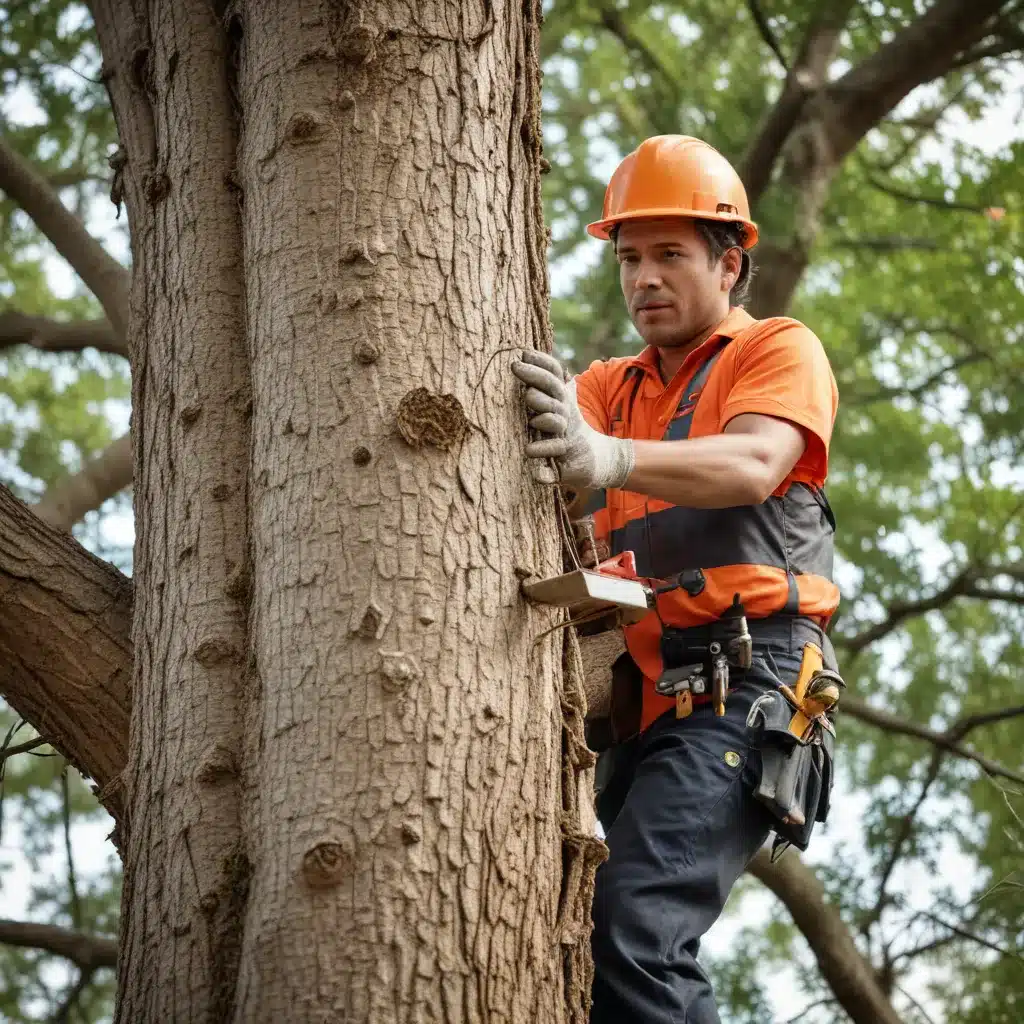
As a tree care specialist with TriCounty Tree Care, I’m excited to share my insights on the intricate world of tree removal. Beyond the physical act of felling a tree, there lies a wealth of knowledge and best practices that ensure the process is carried out safely, efficiently, and with minimal environmental impact.
Tree Removal Fundamentals
Tree removal is a multifaceted operation that requires careful planning and execution. The techniques employed can vary depending on the size, location, and condition of the tree in question. Controlled felling, where the tree is strategically cut and guided to the ground, is a common approach for smaller, isolated trees. For larger specimens or those in confined spaces, sectional removal may be necessary, involving the systematic dismantling of the tree from the top down.
Ensuring the safety of both the tree care professionals and the surrounding area is paramount. Hazard assessment, including evaluating structural integrity, identifying potential fall zones, and recognizing overhead obstacles, is a critical first step. Proper use of personal protective equipment (PPE), such as hard hats, safety glasses, and cut-resistant chaps, is essential to mitigate the risks associated with tree removal operations.
The environmental impact of tree removal must also be considered. Responsible practitioners prioritize minimizing ecological disruption, avoiding damage to surrounding vegetation, and implementing sustainable disposal methods for the tree biomass. This may involve chipping the wood for mulch, repurposing it as firewood, or arranging for proper recycling or composting.
Benefits of Safe Tree Removal
The benefits of safe and efficient tree removal extend beyond the immediate task at hand. By prioritizing professionalism and environmental stewardship, tree care specialists can deliver lasting value to their clients.
Improved Property Aesthetics: The strategic removal of diseased, damaged, or overgrown trees can dramatically enhance the visual appeal of a property, creating a more harmonious and inviting outdoor space.
Enhanced Safety and Security: Eliminating hazardous trees that pose a threat to structures, power lines, or pedestrian areas can significantly improve the overall safety and security of a property.
Reduced Liability Risks: Proactive tree removal, guided by expert assessment, can help mitigate the potential for property damage or personal injury, reducing liability concerns for homeowners and business owners.
Tree Removal Equipment and Tools
Specialized equipment and tools are essential for the safe and efficient removal of trees. Chainsaws and handsaws with the appropriate power and blade size are fundamental for the cutting and sectioning of the tree. Lifting and hauling machinery, such as cranes, skid-steer loaders, and chippers, facilitate the removal and disposal of the tree biomass.
The use of personal protective equipment (PPE) is non-negotiable for tree care professionals. This includes hard hats, safety glasses, cut-resistant chaps, gloves, and sturdy work boots to safeguard against the inherent risks of the job.
Regulations and Permits for Tree Removal
Before undertaking any tree removal project, it’s crucial to familiarize oneself with the local ordinances and restrictions that may apply. Many municipalities have regulations in place to protect mature or significant trees, requiring permits and permissions for their removal. Failure to comply with these guidelines can result in legal and financial consequences.
Tree care specialists must stay abreast of the latest compliance requirements and work closely with the relevant authorities to ensure the tree removal process adheres to all applicable regulations. This not only mitigates liability but also demonstrates a commitment to responsible land management practices.
Professional Tree Removal Services
While some homeowners may feel tempted to tackle tree removal as a DIY project, the expertise and experience of professional tree care specialists offer significant advantages. These professionals possess the specialized knowledge, proper equipment, and safety protocols to execute tree removal operations efficiently and safely.
Engaging the services of a reputable tree care company can also prove cost-effective in the long run. Professionals can identify potential issues, such as structural instability or disease, and provide tailored solutions to address them before they escalate into more significant problems requiring costly remediation.
Identifying Trees in Need of Removal
Not all trees require removal, but it’s essential to recognize the signs that indicate a tree may be a candidate for this process. Structural instability, manifested through cracks, leans, or significant decay, can pose a threat to nearby structures or pedestrians. Disease and pest infestations can also compromise a tree’s health and structural integrity, warranting its removal to prevent the spread of infection to other plants.
In some cases, trees may need to be removed due to interference with structures, such as encroaching on buildings, blocking essential infrastructure, or causing damage to underground utilities. Careful assessment by a certified arborist can help determine the appropriate course of action.
Sustainable Tree Removal Practices
Responsible tree care specialists understand the importance of environmental stewardship. When undertaking tree removal, they prioritize sustainable disposal methods, such as chipping the wood for mulch, repurposing it as firewood, or arranging for proper recycling or composting.
In addition to responsible disposal, tree care professionals may also recommend replanting and reforestation efforts to replace the removed tree and maintain the overall ecological balance of the property. By minimizing the disruption to the surrounding ecosystem, they ensure that the tree removal process aligns with the principles of sustainable land management.
Preparing for Tree Removal
Meticulous planning and preparation are essential for the success of any tree removal project. Site evaluation and thorough risk assessment are the foundation for developing a comprehensive plan of action. Clearing the work area, securing the necessary permits, and notifying relevant authorities and utilities are crucial steps to ensure the safety and efficiency of the operation.
By understanding the fundamentals of tree removal, recognizing the benefits of professional services, and embracing sustainable practices, homeowners and property owners can make informed decisions that protect their investment, enhance their outdoor spaces, and contribute to the long-term health of the local environment. For all your tree care needs, visit TriCounty Tree Care to unlock the secrets of safe and efficient tree removal.


